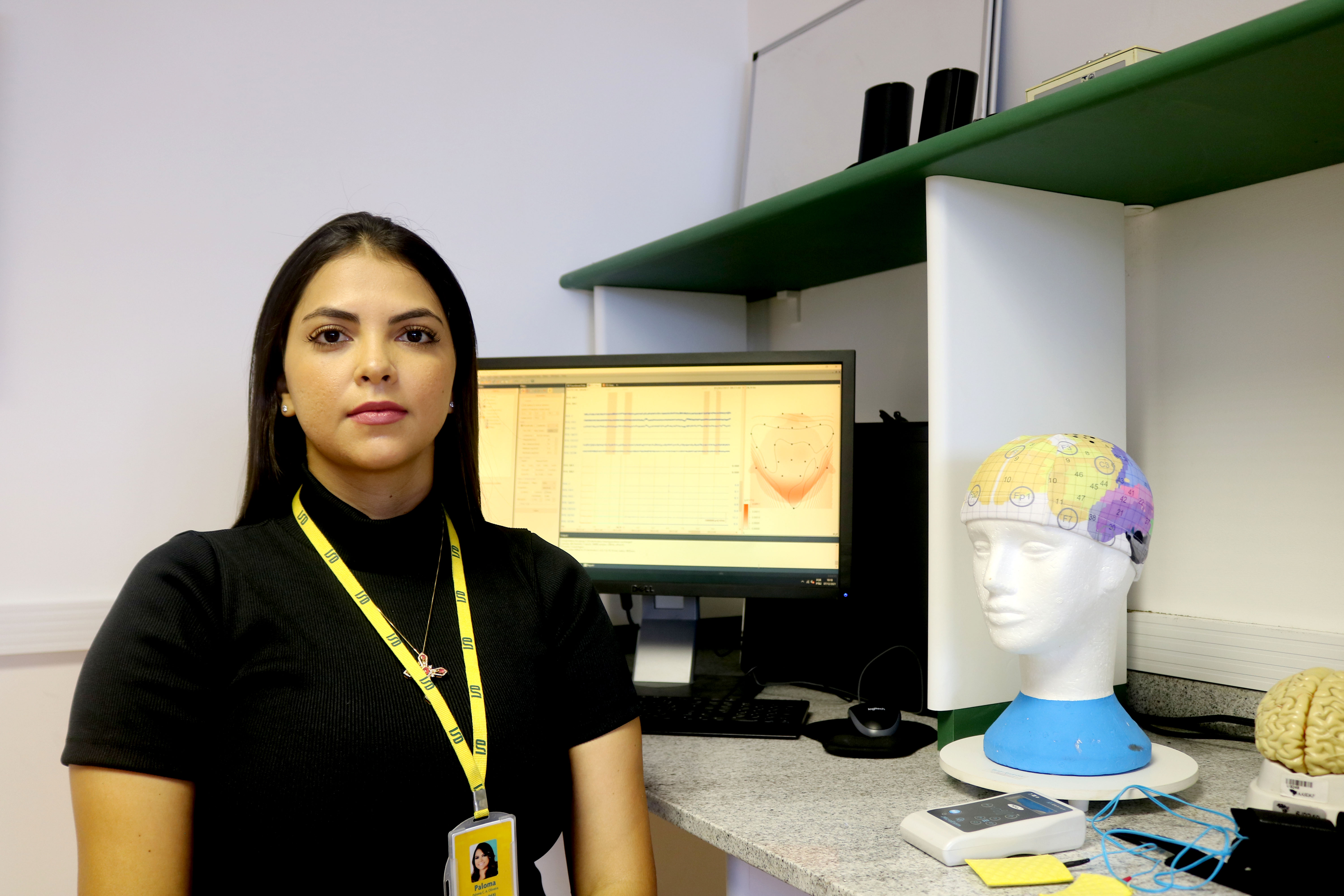With the change in the demographic profile around the world and the increase in the life expectancy of the population, which in Brazil reaches 76.8 years, the aging of the population is a concern and encourages researchers to seek answers to neurological diseases that largely affect the older people. One of them is Parkinson's Disease, for which new treatments that use electrical stimulation have been developed and studied by the scientific community.
At the Edmond and Lily Safra International Institute of Neuroscience, a unit of the Santos Dumont Institute (ISD) in Macaíba (RN), neuroengineer Paloma Oliveira's master's work sought to understand the clinical impact of transcranial direct current stimulation (tDCS) – a technique that consists of applying small electrical currents to the scalp – to help treat people with the disease. The research resulted in the publication of the article “Transcranial Direct Current Stimulation on Parkinson's Disease: Systematic Review and Meta-analysis” in the scientific journal Frontiers In Neuroscience, in January 2022.
Parkinson's disease is a neurodegenerative and progressive neurological disease that affects the central nervous system. The disorder affects the brain cells responsible for producing dopamine, a neurotransmitter with a fundamental role in controlling movements. The highest incidence of cases of the disease is in people over 65 years of age. In Brazil, it is estimated that there are around 200 thousand people with Parkinson's, and this number tends to increase as the population ages. The increase in the percentage of elderly people in the country is already 16% in the last five years, according to the Brazilian Institute of Geography and Statistics (IBGE).
The main symptoms of Parkinson's disease involve difficulty in performing voluntary movements, slowing of reflexes and body movements, tremors and stiffness in the limbs. Among the treatments, the administration of medication is the most common option, however, the response to medication may decrease over the years, explains the author of the article Paloma Oliveira.
“The decrease in response to medications occurs about five years after initial treatment, worsening symptoms. Among the other alternatives are neurosurgical procedures that involve deep brain stimulation, but these are expensive alternatives and can have adverse consequences.”, explains Paloma Oliveira. According to the researcher, appropriate interventions and new therapeutic approaches can present fewer adverse effects and improve patients' functionality.
According to the study, transcranial direct current stimulation (tDCS) gained prominence for being a non-invasive, safe, low-cost neuromodulatory modality, with minimal or no adverse effects, which aroused the interest of the medical and scientific community. However, the technique used exclusively in Parkinson's disease is still a challenge, and there are no exact conclusions regarding its clinical effect.
“We carried out a systematic review of scientific databases on the subject to synthesize, methodologically and statistically analyze the available results and guide the use of transcranial direct current stimulation in Parkinson's Disease. However, our results demonstrated that there was no significant effect of tDCS on the short-term motor symptoms of the disease”, explained the neuroengineer trained in the ISD Master's Degree, Paloma Oliveira.
In addition to the systematic review of articles available in scientific databases, the researcher used meta-analysis, a statistical technique developed to integrate results from two or more studies on the same research question, which allows a broader look at the topic.
Co-author of the article and supervisor of Paloma's master's project at ISD, researcher Edgard Morya explains that this systematic review of scientific works will help direct the practical application of the techniques. “This work supports the practical application of research. Based on this review, we can make a practical application of neuromodulation with people who have Parkinson's with more clarity in relation to the target areas, which, before the review, would not have been impossible, but would have been much more difficult”.
Parkinson's on ISD
Parkinson's Disease is one of the specialties of the Santos Dumont Institute (ISD), which focuses on the health care of people with disabilities. The Parkinson Clinic serves patients with the disease in Macaíba (RN), exclusively through the Unified Health System (SUS). The disease is also the subject of research both at the Anita Garibaldi Health Education and Research Center (Anita), and at the International Institute of Neurosciences (IIN-ELS), through the Master's Degree in Neuroengineering.
Text: Kamila Tuênia / Ascom – ISD
Photograph: Kamila Tuênia / Ascom – ISD
Communication Office
comunicacao@isd.org.br
(84) 99416-1880
Santos Dumont Institute (ISD)
It is a Social Organization linked to the Ministry of Education (MEC) and includes the Edmond and Lily Safra International Institute of Neurosciences and the Anita Garibaldi Health Education and Research Center, both in Macaíba. ISD's mission is to promote education for life, forming citizens through integrated teaching, research and extension actions, in addition to contributing to a fairer and more humane transformation of Brazilian social reality.















